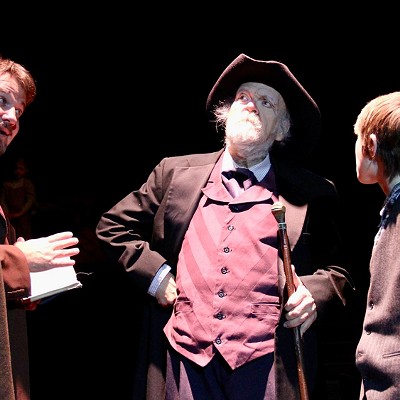City planners, property owners and business leaders in the area have been working on the project, commonly known as the “Quiet Zone,” since 2009. Discussion surrounding it has been ongoing for the last decade, noted City Manager Jim Couch.
Four years ago, Oklahoma City Council approved a measure calling for a quiet zone east and west along the Burlington-Northern Santa Fe rail line between N.E. Seventh and N.E. 16th. In 2010, engineering services were finished, but the project stalled due to funding constraints.
The project will seal off scarcely traveled crossings and enhance crossing signals and gates. Potentially, crossings as far south as S.E. 25th and as far north as Wilshire Boulevard could be closed as part of the work, according to Public Works Director Eric Wenger.
On May 28, the council voted 7-1 to approve a funding plan. Ward 4 Councilman Pete White cast the only dissenting vote.
Wenger told council members the project will cost an estimated $3.9 million with $2.65 million coming from the downtown Tax Increment Finance district, $500,000 from the city’s general fund and $255,000 from the city’s facilities authority.
The remaining balance will be paid by private donors, particularly land owners and businesses along Automobile Alley and in Midtown. So far, private contributions total $668,000, said Mickey Clagg, president of the Automobile Alley Association. Of that amount, the association pledged $100,000.
Clagg said 28 donors have pledged money toward the project.
The need for a quiet zone has grown along with downtown’s residential development. In years past, the proposed area was predominantly industrial. A quiet zone will allow railroad engineers to pass through the crossings without sounding the locomotive’s horn. Current regulations require the train whistle to blow 15 seconds before reaching a crossing.
City officials have pursued the project at the insistence of local developers and property owners.
More than anything, Ward 6 Councilwoman Meg Salyer said, it will have an effect on quality of life downtown.

“This is an issue that involves everyone,” she said. “That sound (train’s horn) is so loud and so long, people have to stop events or conversations to let the train go by. This is significant, but not just significant for Ward 6.”
Salyer said she’s been impressed with the amount of effort from area stakeholders to make the project work. A property owner along Broadway Avenue, she recused herself from the council’s discussion and vote on the funding.
The next step, Wenger said, involves public meetings to gather citizen input followed by design work. The project will include two phases, the first of which will allow for approval of a quiet zone by the Federal Railroad Administration.











